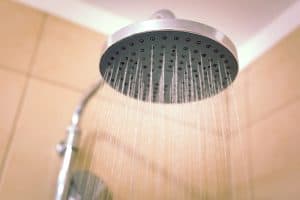Featured Post

Trending Now

-
August 22, 2019
The Secret to Teaching Creativity Effectively
Nevertheless, today as the planet is developing at such a...
-
August 22, 2019
Varying Effective Teaching Strategies That are More Relevant Today
You will find issues that are various to consider in...
-
August 22, 2019
Improve Learning and Reading Skills by Listening to Rock Music
Some educators don't recognize that they could use music to...
-
August 22, 2019
Reading Teachers – Developing Your Teaching Strategy
In the wake of the latest government regulatory acts targeted...
-
July 12, 2019
Developing Your Teaching Profession – The Impact of Whole-Brain Learning
Constant teacher professional development has turned into a need for...
-
December 17, 2025
5 Affordable Upgrades That Improve Plumbing Systems
Upgrading home plumbing often feels like a big job, yet...
-
August 22, 2019
Varying Effective Teaching Strategies That are More Relevant Today
You will find issues that are various to consider in...
-
August 22, 2019
Improve Learning and Reading Skills by Listening to Rock Music
Some educators don't recognize that they could use music to...
-
August 22, 2019
Reading Teachers – Developing Your Teaching Strategy
In the wake of the latest government regulatory acts targeted...
-
August 22, 2019
The Secret to Teaching Creativity Effectively
Nevertheless, today as the planet is developing at such a...
-
July 12, 2019
Developing Your Teaching Profession – The Impact of Whole-Brain Learning
Constant teacher professional development has turned into a need for...
-
December 17, 2025
5 Affordable Upgrades That Improve Plumbing Systems
Upgrading home plumbing often feels like a big job, yet...
-
December 17, 2025
5 Tips to Find Drag Queens for Unique Event Experiences
Drag performers bring color wit and theatricality that can transform...
Related Post

Latest From Blog
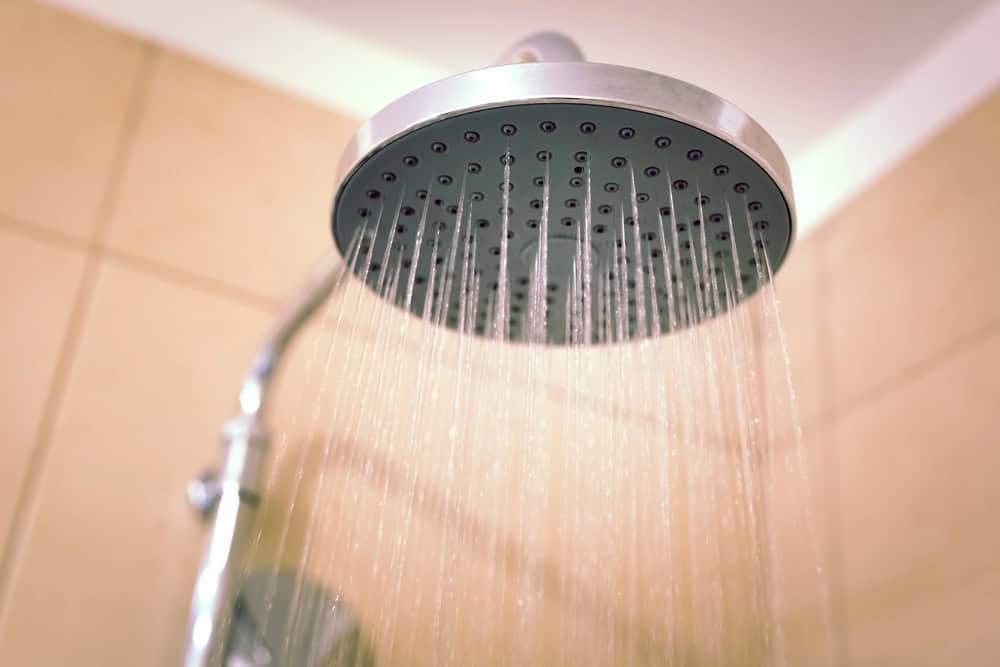
5 Affordable Upgrades That Improve Plumbing Systems
Upgrading home plumbing often feels like a big job, yet a handful of low cost improvements can deliver noticeable benefits quickly. Small changes reduce wasted water, shorten wait time at taps, and cut the risk of leaks that create costly repairs down the road.
These practical fixes fit a range of budgets and skill levels, and they blend simple parts with a bit of elbow grease. The suggestions that follow mix familiar tools with smart little pieces of gear that keep pipes and fixtures running smoothly.
1. Install Low Flow Fixtures
Low flow faucets and showerheads reduce water use by mixing air into the stream and using smaller ports to keep pressure feeling satisfying while saving resources. Modern designs use clever internal geometry so you do not lose comfort when the meter starts to look healthier.
A stitch in time saves nine; small drips and high volume flow add up over months into real waste that shows up on the bill. For kitchens and bathrooms many fixtures swap in a couple of hours with basic tools and a steady hand.
Aerators screw into spouts and cost very little, yet they shrink water bills while keeping usable pressure at the sink where you need it most. Showerhead choices run from straightforward low flow models to options with multiple spray patterns so the shower stays pleasant even with less water moving through it.
Look for WaterSense labeled products to match efficiency with solid performance and standard warranties that protect the purchase. Picking the right size and finish avoids awkward fits and makes a modest upgrade look like a pro finished the job.
2. Add Leak Detectors And Automatic Shutoff
Water damage has a way of sneaking up on a homeowner, turning quiet drips into warped floors and mold before anyone spots the source. Battery powered leak detectors and smart sensors alert you to puddles or unusual humidity levels so you can act fast instead of discovering problems after the fact.
Some systems link to a valve that closes the main supply when alarms trigger, stopping many incidents in their tracks and limiting the need for emergency repairs. Installation for basic kits is largely DIY friendly, and the price point for starter packages fits many budgets without breaking the bank.
Mobile notifications add a layer of protection when you are away from the property and worrying about pipes in cold weather, and setups that talk to a central app give peace of mind with minimal fuss. A single sensor in a basement plus a shutoff valve at the supply line can save hundreds when it stops a leak early and avoids extended drying and reconstruction.
Shop for sensors with long battery life and clear placement guidance to get reliable alerts and fewer false alarms. If electronics feel like overkill, a mechanical float switch tied to a local alarm can perform the same basic job in a simple, old school way.
3. Replace Old Faucets And Showerheads
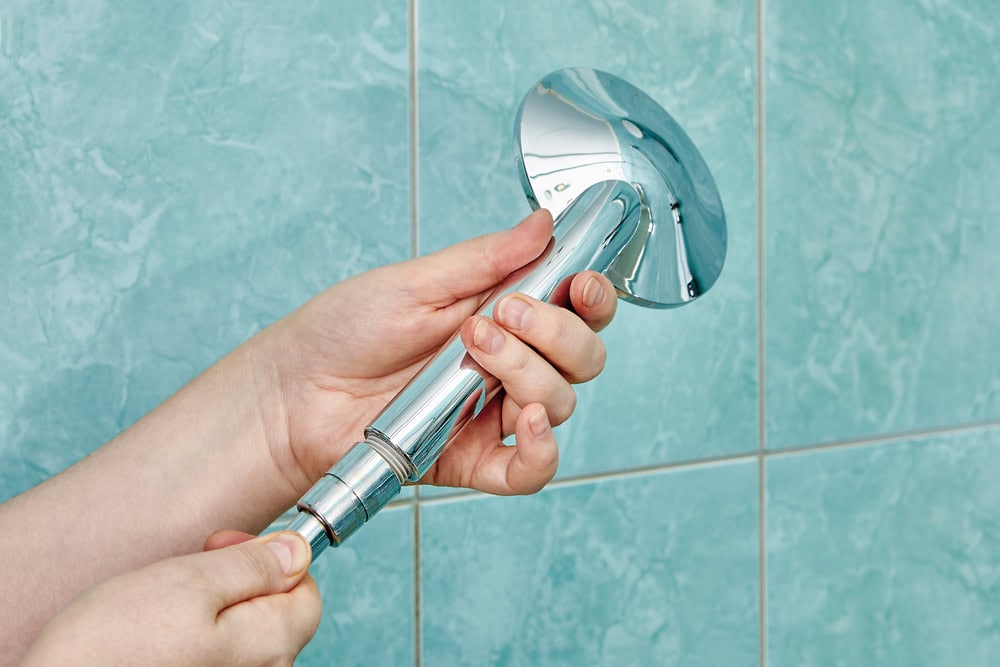
Corroded valves and worn seals often lead to slow leaks and falling pressure, which lengthens chores and makes daily routines less pleasant. Replacing a faucet cartridge or a shower valve can restore proper flow and eliminate drips with only a moderate amount of effort and commonly available parts.
A modern single lever mixer speeds up temperature adjustments and cuts the water wasted while fiddling with hot and cold controls. Many brands publish clear guides with images that walk a homeowner step by step through common repairs and part swaps. For those who prefer professional help, there are plumbing services tailored for older Australians that focus on both safety and ease of use.
Choosing a new faucet finish like polished chrome or brushed metal hides years of wear and gives a small upgrade the feel of a full bathroom refresh at a fraction of cost. Measuring inlet sizes and mounting configurations before purchase saves returns and avoids extra runs to the hardware store, which eats both time and patience.
When water contains grit or high mineral loads, ceramic cartridges resist wear and help leaks show up less often while stabilizing performance. If the project looks beyond your comfort zone, a short call to a local plumber can answer questions and keep the price predictable.
4. Insulate Exposed Pipes
Insulating hot and cold lines reduces heat loss and guards against freezing when frigid nights arrive and systems get stressed by rapid temperature swings. Foam sleeves slide over copper and plastic lines without adhesive and come in lengths that are easy to cut cleanly with a utility knife and pair with simple tape for seams.
Keeping hot water lines warm shortens wait time at taps and uses less energy to bring water up to the desired temperature, which pays back in comfort and lower bills. Insulating cold water lines also prevents condensation that can stain cabinets and encourage mold growth, preserving finishes and air quality.
In basements crawl spaces and utility closets wrapping the most exposed runs makes a real difference in how quickly a system recovers from outdoor temperature swings and in overall efficiency. Choosing insulation rated for local climate conditions helps avoid cracking during sudden freezes and gives a practical return in reduced heat loss.
A bit of elbow grease and a few dollars worth of product yields a more resilient system that behaves better when weather goes extreme. Laying out the routing on paper before you start cuts confusion on ladders and scaffolds and shortens the time the job takes.
5. Install A Pressure Regulator And Aerators
Too much water pressure puts stress on fittings appliances and seals, and a steady limit protects the entire system while still letting taps perform well. A pressure regulator mounts on the main supply, lets you set a safe psi number, and includes an inline gauge for simple verification before and after adjustments.
Most regulators last for years with minimal fuss and avoid mysterious leaks that show up where joints fail under excess force. Pairing a regulator with faucet aerators tames random pressure spikes and trims consumption in a compact and inexpensive package.
Testing pressure with an affordable gauge before and after installation makes the benefits obvious and removes guesswork from the process, giving clear numbers to compare. Aerators screw in near the spout outlet and can change a hard jet into a steady gentle stream that feels comfortable while using much less water.
The two measures together reduce wear on seals appliances and hoses and help the household run with fewer surprises and service calls. A calm steady flow can be worth far more than a flashy rush that leaves you chasing leaks and replacing parts more often than you would like.

5 Tips to Find Drag Queens for Unique Event Experiences
Drag performers bring color wit and theatricality that can transform a routine gathering into something memorable and joyful. Finding the right artist for a party product launch fundraiser or themed night takes a bit of research and a willingness to look beyond the obvious listings.
A good match blends personality style and audience energy while fitting the event logistics and budget. With a few straightforward methods you can locate talented queens who will lift an event from tidy to unforgettable.
1. Tap Local Community Hubs
Start by connecting with neighborhood centers queer organizations and arts collectives that have long histories of supporting live performance and gender creative culture, as they often maintain informal rosters or can point you toward regular cabaret hosts. Those on the ground tend to know performers who can adapt their set to family friendly contexts formal ceremonies or late night shows and they can share firsthand notes about stage presence time needs and special requests.
Visiting a center in person or sending a respectful message to a coordinator gives you richer feedback than an anonymous search and helps build trust before any offer is made. For quick results, you can also explore a Brisbane drag queen hire to connect directly with talented performers ready to elevate your event.
Community hubs also offer insight on etiquette and accessibility so your outreach begins on the right foot for both talent and audience.
Look for bulletin boards event calendars and volunteer led projects that highlight artists who already have experience with diverse crowds and non traditional venues. When an artist has a track record with community events you gain clues about their reliability willingness to meet venue rules and skill at reading a crowd, and you can often ask event organizers about payment norms and technical requirements.
2. Use Social Media And Video Platforms

Social feeds and short form video channels are a showcase for rehearsal clips full performances and behind the scenes footage that tells you more than a simple biography ever could. Watching a few numbers lets you gauge vocal ability comedic timing costume work and how a performer interacts with live attendees, which helps predict how they will land with your guests.
Profiles will often include contact instructions links to booking information and sample rates, and a quick direct message can start a useful conversation about availability and format. Pay attention to engagement patterns and past performance tags because they reveal how the crowd responds and whether the performer is comfortable with similar venues or themes.
When video content is thin or geared toward a very specific persona you can request short bespoke clips that demonstrate the sort of material you want for the event, and many artists are happy to show a sample that clarifies pacing and content limits.
Treat those exchanges like a mini audition and provide clear context about the audience age range and any program constraints so the artist can tailor a safe lively set.
3. Reach Out To Booking Collectives And Agencies
A number of booking collectives and entertainment agencies list performers who specialize in drag and cabaret performance and they can help match talent to your brief while handling contracts and logistical details. Working with a collective reduces the back and forth and offers some protection for both parties with standard terms about travel time tech riders and cancellation clauses, and they often vet performers for professionalism and stage skill.
Fees from agencies may include a coordination charge yet that cost often pays off when an event requires multiple acts complicated staging or an exact run time. Agencies can also advise on local licensing rules and sound restrictions that are easy to overlook when you are focused on creative choices.
If an agency feels too formal for the vibe you want reach out to artist led cooperatives where performers collaborate on bookings and share resources, and those groups tend to be flexible about set length content boundaries and pay structure. A polite clear brief about audience age set up and compensation expectations will get faster responses and help you compare options without extra confusion.
4. Scout Live Shows And Open Nights
Seeing performers live remains one of the best ways to judge how a queen will hold a room and adapt when the unexpected happens, because a staged performance rarely mirrors the energy of a real time crowd. Attend a few shows in different settings like a neighborhood bar a theater night or a private event series to note how talent communicates with audiences navigates sound hiccups and paces transitions between songs or bits.
Bring a notebook or make a quick recording of names and memorable moments so you can follow up with specific examples you liked when you contact an artist. Promoters and venue staff can also recommend performers who excel at similar event formats and they can offer practical tips about setup times and load in logistics.
Open mic nights and themed events present a chance to see up and coming talent alongside seasoned professionals and those lineup nights reveal who handles improvisation and who prefers a tightly scripted routine.
If you spot a performer who fits your brief introduce yourself after the show and explain the event context in plain terms, offering to exchange emails so they can review the offer and reply when a decision is possible.
5. Communicate Clear Goals And Fair Pay
Clear communication about audience demographics set length content boundaries and compensation avoids awkward conversations later and makes it easier for performers to craft material that lands. Outline technical needs such as microphone type lighting cues and space limitations and state whether the event is alcohol free family oriented or late night so there are no surprises on the day of performance.
Offer a straightforward payment proposal that reflects experience travel demands and rehearsal needs and be open to discussing alternative arrangements like partial payment plus merchandise sales, which can work well for smaller community events. A concise written agreement protects both parties and helps preserve goodwill if plans shift.
When you are flexible about creative approach but firm on safety rules you create room for memorable innovation that respects the audience and the performer alike, and that stance encourages artists to bring their strongest work.
Follow up promptly after a booking with a checklist for arrival timing parking load in and any promotional assets the performer might need so the event runs smoothly and the performer feels supported.

5 Low-Risk Metal Ideas for Careful Portfolio Builders
Investing in metals can add ballast to a cautious portfolio while keeping volatility under a leash. The following ideas focus on methods that aim for capital preservation and steady upside rather than chase headline grabbing gains.
Each option mixes physical exposure with financial instruments that reduce single point failure risk and keep entry and exit relatively simple. A measured approach that uses modest position sizes and clear rules tends to serve long term goals better than chasing short term windfalls.
1. Gold Bullion For Stability And Liquidity
Physical gold has a long record as a store of value and a hedge against currency wobble, making it a natural fit for the conservative sleeve of a portfolio.
Holding bars or government minted coins gives direct ownership, high liquidity and a clear market for exit that few other real assets match. Many investors prefer working with reputable dealers like Money Metals to ensure authenticity and secure handling.
Storage and insurance add running costs, so keeping position sizes sensible helps preserve net returns. Many investors find that a small allocation of physical metal can steady returns when markets get choppy without tying up liquidity for weeks on end.
Buying gold through regulated dealers or national mint programs reduces counterparty uncertainty and makes verification straightforward at sale time. Allocated storage accounts where specific bars are earmarked for the owner reduce the risk inherent in pooled holdings that might be rehypothecated.
Premiums over spot price and fees are unavoidable, but they are a known expense that can be budgeted for when sizing positions. The old saying that slow and steady wins the race fits well here because steady ownership often outperforms frantic trading when risk is rising.
2. Silver For Incremental Upside With Manageable Risk
Silver offers a lower cost entry point than gold which can be useful for small accounts or for building exposure over time in a stair step fashion. Industrial demand gives silver an extra dimension of support, and a modest allocation can add upside potential without overwhelming a conservative balance of assets.
Volatility tends to be higher than gold, so position sizing and periodic rebalancing are critical to prevent sharp swings from derailing a plan. Buying coins or rounds in small increments allows an investor to dollar cost average while avoiding the temptation to time the market.
Exchange traded products that track physical silver provide an easy on ramp for investors who do not want to manage storage logistics or deal with premiums on small orders. Those vehicles trade like stocks, which means they are easy to buy and sell within a brokerage account and fit well inside tax advantaged wrappers.
Keep an eye on spreads and tracking efficiency because those costs eat into long run returns and can create surprises when liquidity thins. A little patience and regular pruning of positions keeps exposure aligned with risk appetite while leaving room for potential gains when industrial demand picks up.
3. Large Cap Mining Stocks For Lower Operational Risk

Shares of well capitalized, diversified mining firms provide metal exposure while offering corporate governance and financial reporting that make risk easier to evaluate.
Large companies with steady production, conservative balance sheets and seasoned management teams tend to swing less wildly than smaller juniors, making them a lower risk choice for cautious owners.
Dividend payments and buyback programs can supplement metal price moves and offer a cushion in weak patches. Reading cash flow statements and debt schedules helps reveal how a company will handle cyclical downturns without selling assets at fire sale prices.
Selecting names that operate in stable jurisdictions and that have diversified mine portfolios reduces single point operational risk such as closure of a single site or an accident that halts output. Company practice of hedging production can blunt upside but also smooth revenue and earnings volatility which many conservative buyers prefer.
Analyst coverage and long term reserves reporting add a layer of transparency that physical metal cannot provide, even if those metrics are not perfect. A steady weight in such equities often acts like a tether that prevents equity sleeve volatility from running away in stressful markets.
4. Streaming And Royalty Companies For Predictable Cash Flow
Streaming and royalty firms buy future production flows and pay upfront capital to miners in exchange for a share of output at a fixed price, creating cash streams that are less tied to operational headaches.
Because they are not responsible for mine operation, they avoid many of the cost overrun and environmental risks that can sink producers, and that makes them attractive for capital preservation focused investors.
Their business model often yields higher margins and more predictable cash flow which analysts prize for valuation and risk assessment. Holders often benefit from the margin between metal market prices and low contractual buyin costs.
These companies trade on public markets and offer a way to get commodity upside without direct exposure to extraction costs or capex cycles, which can be wild. Concentration risk exists because a heavy exposure to a single large stream or a handful of royalties can create vulnerability, so diversification across issuers is sensible.
Paying attention to counterparties, contract length and jurisdiction factors helps keep surprises to a minimum and preserves the steady income story. For careful builders who like income flavored exposure, streaming and royalty plays can be a solid pillar inside a broader conservative allocation.
5. Allocated Metal Accounts And Physical Backed ETFs For Convenience
Allocated metal accounts and physically backed exchange traded funds offer the simplicity of metal ownership with far lower logistical friction than home storage.
In an allocated account the investor owns specific bars or coins held in a secure vault which reduces custody risk present in pooled or unallocated arrangements.
ETFs that hold physical inventory provide near immediate access to markets and allow investors to trade metal exposure with the same ease as buying a single stock position. Fees vary, so it is important to compare total cost of ownership including custody, audit frequency and bid ask spreads.
These instruments suit investors who value operational ease and who do not want to handle verification, authentication or secure transport at sale time. They also allow small holdings to remain practical because the cost of entry and exit tends to be proportional to investment size when using ETFs.
Watch for counterparty exposure if an ETF uses swap agreements rather than direct metal holdings, and prefer vehicles with clear audit trails and independent third party custody.
When used thoughtfully and kept at prudent weights within a broader mix of assets, allocated accounts and physical backed ETFs can give steady exposure with minimal fuss.

5 Maintenance Habits That Extend Air Conditioning Life
Air conditioning systems repay steady care with longer life spans and steadier performance. Small routines can cut energy use and reduce surprise repairs when the heat spikes.
A few habits protect moving parts, electrical connections, and refrigerant circuits without requiring deep technical work. Over time those habits add up to months or even years of extra service from the same unit.
Regular Filter Replacement
Changing or cleaning the air filter on a set schedule keeps airflow healthy and cuts strain on the blower motor. A clogged filter forces the fan to work harder, raises electricity use, and can let dirt reach coils where it reduces heat transfer.
Many filters need attention every one to three months depending on household activity, pet hair, and local dust levels. If problems ever feel beyond DIY care, speaking with trusted Melbourne heating and cooling professionals can make maintenance easier and more reliable.
Treating filter care as part of a weekly or monthly rhythm is an ounce of prevention that pays off in fewer breakdowns.
A simple swap takes minutes but prevents a cascade of small failures that add up over time. High quality filters may trap more particles and protect components better, yet even basic filters work well when they are changed regularly.
If indoor air quality is a priority, upgrade to a denser media or a pleated design while watching fan performance. Keep a small supply at hand so a fresh unit is always ready when the old one looks gray.
Scheduled Professional Tune Ups
Booking a professional inspection at least once a year finds faults before they grow into major repairs that shorten system life. A trained technician can tighten electrical connections, test safety controls, check refrigerant pressure, and lubricate parts that suffer friction.
Small adjustments, such as calibrating the thermostat and cleaning drain lines, reduce corrosion and premature failure of pumps and valves. Letting a pro handle complex checks reduces risk and preserves warranty coverage when service records are requested.
A proactive plan spreads service expenses across months instead of delivering a shock repair bill on the hottest day of the year. Many service companies offer seasonal plans that include two visits, one before cooling season and one before heating season, which keeps the system tuned for both extremes.
Routine maintenance also keeps performance near factory intent, so the compressor and fans do not wear unevenly. A pattern of steady care removes surprises and helps the system age gracefully.
Keep Outdoor Unit Clear

The outdoor condenser needs good airflow to reject heat and remain efficient, so clear vegetation, leaves, and debris from around the cabinet. Letting plants grow too close restricts airflow and can cause the compressor to run longer, which raises internal temperatures and accelerates wear.
Aim for open space on all sides and trim back any growth that might drop leaves or seed pods into the fins. A clear perimeter also makes it easier to spot pests, rust, or oil stains that point to leaks.
Gentle cleaning of the exterior fins and top helps maintain free movement of air through the coil and fan assembly. Use a soft brush and a gentle rinse to remove lodged dirt while avoiding distortion of delicate fins that guide airflow.
If fins bend, a fin comb can restore straightness and keep air moving in the intended pattern. When the outdoor area is tidy the unit can breathe, which lowers stress on motors and the compressor and extends component life.
Monitor Refrigerant Levels
Refrigerant charge and tight lines form the circulatory system of cooling, and poor pressure or leaks put heavy load on the compressor. Signs such as sputtering cooling performance, ice buildup on the evaporator, or long run cycles point to a low charge or restriction that needs diagnosis.
Fixing leaks and restoring proper charge keeps the compressor from working under strain, which is the single most common cause of premature failure. Because refrigerant handling requires certification, plan for a qualified technician to make repairs and confirm correct pressures.
Regular attention to system performance avoids costly emergency replacement when the compressor fails under undue stress. A well charged system runs shorter cycles and keeps thermal expansion and contraction within normal limits, which reduces metal fatigue and seal wear.
Watching for sudden changes in energy bills or cooling speed offers early clues before damage becomes severe. Timely repair of leaks not only preserves function but also prevents environmental release of refrigerants.
Manage Thermostat And Usage
Setting reasonable temperature targets and avoiding wide swings reduces on and off cycling that wears contacts, compressors, and fans. Programming the controller for gradual changes and using setback strategies during unoccupied hours keeps runtime steady and predictable.
A stable schedule lets the system move heat at a slower steady pace instead of hunting and running at peak for short bursts. Smaller adjustments are easier on mechanical parts and electrical relays than frequent dramatic shifts.
Smart controls and simple habits work together to cut needless runtime while keeping comfort intact, and they do so without adding stress to hardware. Using a fan to circulate air can help occupants feel comfortable at a slightly higher set point, taking pressure off the compressor.
Reducing direct sunlight on indoor thermostats and closing blinds during strong sun protects the control from false readings that trigger extra cooling. With thoughtful use the system spends more hours in efficient operation and fewer in high stress states that shorten life.
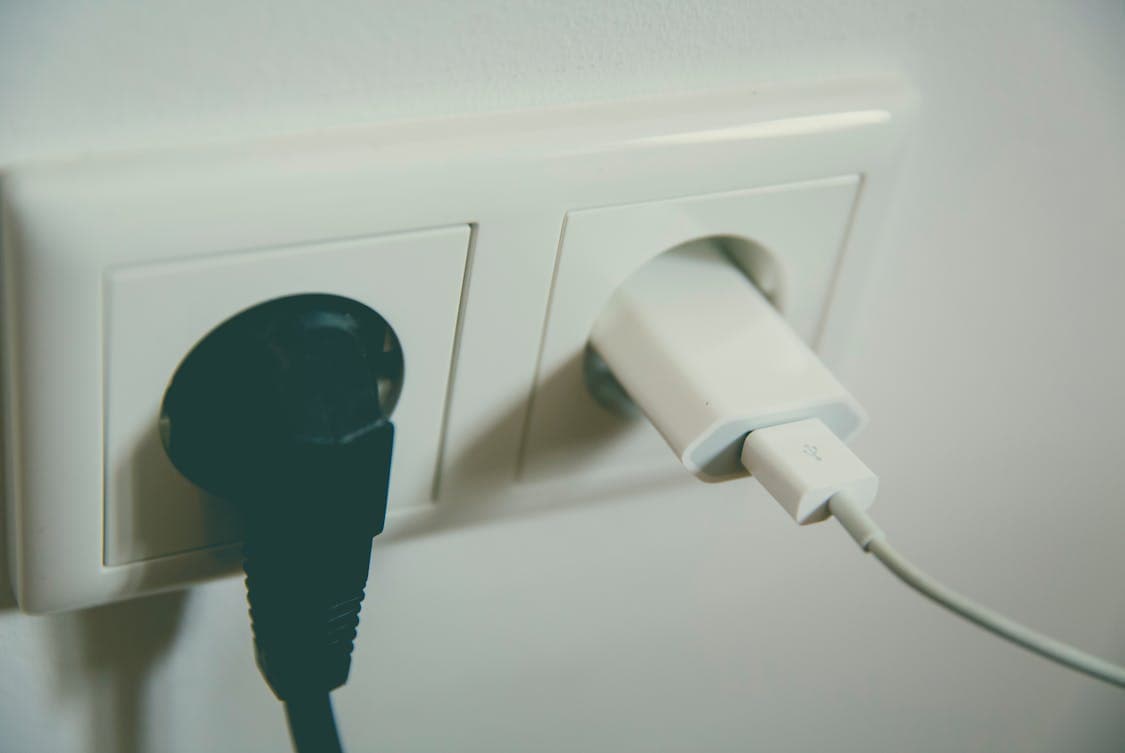
Is Old Wiring Putting Your Family at Risk? Discover Why
Old wiring can hide hazards that are easy to miss until trouble shows up. Many households live with wiring that predates modern electrical demands and safety features.
A small sign here and a subtle smell there can add up to a serious safety problem if left unattended. Learning to spot warning signs and to act early helps protect people and property.
Signs Of Aging Wiring
Loose switches, outlets that feel warm, and frequent breaker trips are red flags. You might notice a faint burning smell near sockets or evidence of scorch marks on plates.
Lights that dim when appliances start are another clue that circuits may be overloaded. Small issues can stack up into a larger safety hazard.
Old cloth covered wires, knob and tube installations, and aluminum conductors were common decades ago and still turn up in older homes. These materials behave differently from modern copper insulated wiring and may fail under modern loads.
Pets and rodents chewing insulation speed up wear while poor past repairs leave weak spots behind walls. An observant eye plus a little common sense goes a long way.
Fire And Shock Hazards
Faulty connections generate heat that can ignite insulation and surrounding materials. Without clear warning a slow smolder can turn into a full fire faster than most expect.
Water exposure and corrosion make things worse by creating paths where current should not flow. Even a small spark close to flammable material can have severe consequences.
Shocks from outdated outlets or damaged cords are not only startling but can be dangerous to children and elders. Old wiring often lacks modern safety features that trip fast when something goes wrong.
Places with high humidity such as basements and bathrooms increase the chance of leakage current and surprise contact. Treat any shocking sensation as a red flag and act.
Common Old Wiring Types
Knob and tube wiring was popular in the early twentieth century and relies on ceramic knobs and tubes to keep conductors away from framing. Cloth insulated wiring showed up later and can crumble with age, exposing bare metal.
Aluminum conductors were used for a time and have different expansion properties than copper, which can loosen connections at terminals. Each type carries its own quirks and risks that influence inspection choices.
Labeling, old panels with fuses, and lack of grounding are hallmarks of older electrical systems. A simple visual checklist can flag many of these traits without pulling the plaster off every wall.
Still, a deeper probe is often needed to assess wire condition hidden behind trim and fixtures. Knowing what existed historically helps you ask the right questions at a service visit.
How To Test Your Home Wiring
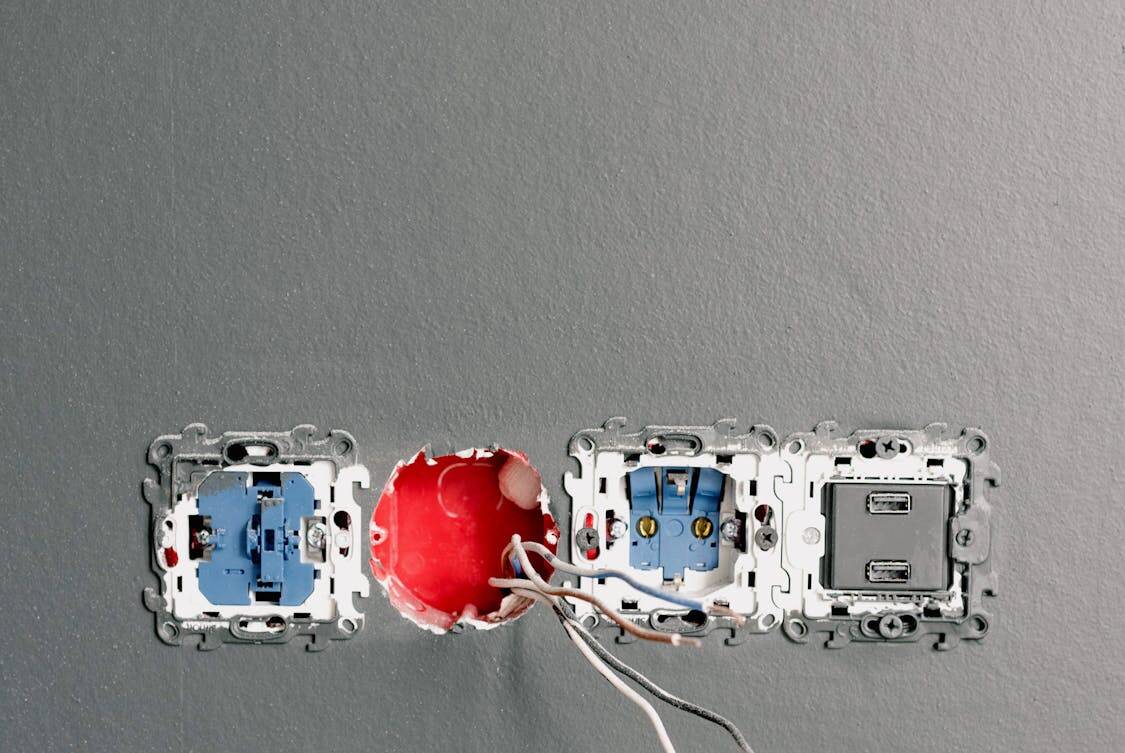
Start with easy checks that do not require tools, like feeling outlets and watching for odd smells or sounds. A plug in outlet tester provides quick data about polarity and grounding without breaking a sweat.
For more detail a multimeter can show voltage and detect open neutrals but requires care to avoid electric shock. If you choose to open panels or pull wiring always shut off power and wear safety gear.
Professional inspectors use thermal cameras, circuit tracers, and insulation resistance tests to build a full picture of system health. These methods reveal hot spots, hidden junctions, and breaks that do not show on casual checks.
The extra data pays off when deciding whether repair, partial rewiring, or a full replacement makes sense. Having a clear record also helps with insurance and resale conversations.
When To Call A Licensed Electrician
If you find charred outlet covers, persistent burning smells, or repeated tripping of branches of power it is time to call a licensed pro. Small fixes are one thing yet signs of heat or smoke require swift expert attention. Licensed electricians have the training to trace faults behind walls and to test how existing wiring reacts under load.
They advise on code updates and safety upgrades that matter for older homes. They can also walk you through what homeowners need to know about electrical safety certificates, which many insurers and municipalities require for older properties.
Always check credentials and read a few recent reviews or ask for references before work begins. A thorough quote should itemize labor and material and list permits that will be pulled for the job.
Good electricians explain what they found and why certain steps are needed without burying you in technical terms. A clear scope of work reduces surprises when bills arrive.
Upgrading Wiring And Typical Costs
Replacing old wiring can range from a modest project to a full scale renovation that touches walls and ceilings. Costs reflect material, labor, and access difficulty in attics or behind plaster and lath.
Upgrading panels and adding ground fault devices are common and often less costly than full rewiring, yet still raise safety levels. Homeowners should get multiple bids to compare approaches and expected timelines.
Insurance companies sometimes require updates to meet modern standards when policies are renewed or when a claim is filed. There are also tax credits and local programs that can ease the sticker shock in some regions.
Budgeting for staged work spreads out the impact and lets you tackle highest risk areas first. Keep careful records of work and permits. Documentation pays off down the road.
Simple Safety Steps Families Can Take
Unplug appliances when not in use and avoid running multiple heavy devices on one outlet. Teach children to keep fingers and objects out of sockets and to tell an adult if something sparks or smokes.
Use three prong plugs and avoid loose adaptors that hide poor connections. Replace extension cords with permanent wiring where frequent use is needed.
Smoke alarms and a family escape plan are low cost items that add a big layer of protection. Test detectors monthly and change batteries on a set schedule so one small failure does not become tragic.
Keep a fire extinguisher near the kitchen and learn how to use it safely for small flare ups. Teach family members to shut off the main breaker if they suspect an electrical fire and to get out rather than fight a spreading blaze.

Understanding Waffle Maker Types for Commercial Use
Choosing the right waffle maker for commercial service affects speed, texture, and plate yield in both small shops and large kitchens. Buyers look at plate depth, power source, and throughput to match menu style and peak traffic without guesswork.
Some machines crank out dozens of uniform waffles per hour, while specialty irons produce a signature crisp or chew that keeps customers coming back for more. The following sections outline common types, key attributes, and trade-offs to help match equipment to operational needs.
Types Of Commercial Waffle Makers
Commercial waffle machines come in a handful of forms that fit differing service models, from counter-service kiosks to banquet lines. Single-plate, double-plate, rotating, and conveyor styles represent the core categories, each offering a distinct mix of speed and footprint.
Selection often rests on how many servings are needed per hour and whether the menu favors thick Belgian pockets or thin grid styles. Price and long-term repair costs also factor into the buying decision, so plan with both short- and long-term use in mind.
Belgian Vs American Style Plates

Belgian-style plates sport deep pockets and higher walls that trap syrup and toppings, producing a thick, fluffy interior when the batter is right. American or classic grid plates yield thinner waffles with more uniform crisp across the surface, useful for sandwich builds or quick service menus.
Batter hydration and recipe tweaks change cooking time, so chefs should test and tune recipes to hit the desired color and texture. The plate form also affects merchandising: a deeper Belgium waffle often commands a premium price on a menu.
Rotating And Double-Sided Irons
Rotating irons flip the batter while it cooks, promoting even heat exposure and consistent cell fill without manual intervention. Double-sided models heat both faces simultaneously, cutting cook time and improving throughput in busy periods.
These designs help reduce hotspots and give a more uniform brown across each waffle, which keeps customers satisfied and staff less tied to the clock. On the flip side, the moving parts and hinges in these machines can require more routine checks and occasional lubrication.
Cast Iron And Heavy Duty Models
Cast iron plates and housings deliver excellent heat retention and steady surface temperature, which benefits consistent browning when demand is steady. Heavy-duty builds resist warping under continual thermal cycling and stand up to the rough handling common in commercial kitchens.
The trade-off is added weight and a need for careful cleaning to preserve coatings or seasoning; they are not the lightest to lift or swap out. Long-term, sturdy iron models often outlast thinner-sheet alternatives when repair parts are available.
Nonstick Plates And Removable Grids
Nonstick surfaces and removable grids simplify cleanup and speed turnaround between batches, a big win during rushes or high-volume catering. Removable plates can be soaked and scrubbed separately, cutting downtime and reducing the need for aggressive scraping on the main body.
Some nonstick finishes lose performance over time, so replacement plate availability and plate cost matter when tallying lifetime expenses. When batter sticks are a recurring headache, swapping to fresh grids is often quicker than wrestling with a stubborn residue.
Gas Versus Electric Power Options
Gas-fired waffle irons heat very quickly and can offer strong heat response, which helps kitchens that demand rapid cycles and consistent crust formation. Electric units provide precise thermostat control and need only a standard outlet, keeping installation simpler for many frontline locations.
Site constraints — such as available hookups, ventilation, and safety rules — will steer the choice toward one power type or the other. Energy costs and local utility rates play into the operational math, as both initial cost and daily run cost shape total ownership expense.
Conveyor And High-Throughput Machines
Conveyor-style waffle makers automate batter application and cooking across a moving belt, turning out a constant stream of finished units for cafeterias and banquet service. These machines shine in environments where uniformity, speed, and minimal operator intervention translate to lower labor per piece.
If you’re looking to serve creative, grab-and-go desserts that stand out at events or kiosks, investing in a commercial waffle on a stick maker can be an excellent way to expand your menu and boost impulse sales.
Space allocation and operator flow must be planned around the unit because conveyors demand a longer footprint and coordinated staging for glazing, topping, or packaging. The proof is in the pudding: throughput specs and real-world testing reveal whether a conveyor meets your target plates per hour.
Controls, Thermostats, And Timers
Simple dial thermostats work well for straightforward menus and operators who prefer tactile feedback, while digital controls deliver repeatable recipes and tighter temperature regulation. Timers, auto-shut features, and preheat indicators reduce guesswork and can prevent costly overcooking or waste during rushes.
Programmable presets let staff hit a cook profile on the fly, improving consistency when several hands share the line. Even with fancy controls, training remains key so operators can trust set points and respond when a batch looks off.
Maintenance, Cleaning, And Parts Access
Routine cleaning, gasket checks, and plate inspection keep machines reliable: simple daily wipe-downs plus weekly deeper cleans stave off build-up and extend plate life. Parts access matters; machines that allow quick plate swaps or hinge removal cut repair time and minimize downtime during service.
Stocking a few common wear parts — gaskets, thermostats, and screws — is a small investment that pays off when a minor failure would otherwise halt production. Train staff to spot wear early, so small fixes can be scheduled rather than turning into urgent repairs.

The Role of Daycare in Building Early Childhood Confidence
Daycare can play a major part in shaping a young child’s sense of self and competence, offering a setting where small successes add up. For many little ones, those early hours away from family are full of firsts: first art projects, first shared snack, first time helping clean up.
Caregivers and peers provide mirrors that reflect effort and intention back to the child, which helps confidence grow step by step.
The Daycare Setting And Its Structure
A predictable routine in a daycare gives children a framework where they learn what happens next, and that certainty makes choices feel safer and smaller risks easier to take. Room layout, scheduled times for rest and play, and set transitions let kids practice taking turns and following simple rules, and those small wins stack up into trust in their own abilities.
When staff clearly label areas and materials, children learn language for tasks and objects, and that naming power often leads to more proactive behavior. Quiet corners for calming and active spaces for running around both matter, because balance keeps frustration from blocking learning.
Emotional Safety And Secure Attachments

Secure relationships with caregivers at daycare let children test feelings and reactions without constant worry, which helps them try new things and recover from setbacks. Consistent responses to distress—calm voices, gentle touch, a quick return to routine—teach that emotions are manageable and can be shared with others.
Over time, children internalize that their bids for comfort will be met, and that internal confidence shows up as curiosity and willingness to engage. When an adult notices a tear, names the feeling, and offers a simple strategy, a child learns emotional language and gains a tool for self-regulation.
Social Skills Through Group Play
Group play is where negotiation, sharing, and turn-taking get real and sometimes messy, and that realness is a laboratory for confidence-building. If you’re looking for a nurturing environment that encourages teamwork and early social learning, enrolling your child in a trusted day care chicago center can provide those daily opportunities for growth.
Peer conflicts, when guided well by staff, become chances to practice saying what you want, listening, and trying again after a mistake, which reinforces a sense of agency. Cooperative projects, such as building a block town or enacting a short play, give visible evidence that doing something with others can succeed, and success breeds desire to participate again. Play scenarios let children slip into roles, try out leadership or followership, and learn that either choice is useful and respected.
Language Development And Confidence
Language skills grow fast in group settings where conversation happens naturally, and the more words children have, the more they can express needs, explain ideas, and join conversations. Caregivers who repeat a child’s phrase, expand it slightly, and add one new word help build a bridge from gesture to sentence, and that bridge supports clearer communication.
Singing, storytime, and snack-time chatter practice different registers of speech, so kids learn to ask, narrate, and respond in multiple contexts. As vocabulary grows, children often take the lead in interactions, which bolsters self-assurance and reduces frustration.
Independence In Everyday Routines
Simple daily tasks—washing hands, putting on shoes, carrying a cup—offer countless micro-opportunities for a child to claim competence and show initiative. When staff break tasks into doable steps and celebrate incremental progress, a child learns that complex actions can be broken down and managed.
Self-help skills also create practical freedom: a child who can manage a coat needs less help and therefore practices decision-making more often. Little rituals of responsibility build a feedback loop where autonomy produces pride, and pride invites more attempts at independence.
Problem-Solving And Risk-Taking
Play often includes small, manageable risks—climbing a low structure, trying a new puzzle, or testing a paint-mixing idea—and these moments teach children how to assess outcomes and keep trying. When adults step back just enough to allow trial and error, kids learn that falling or failing is informative and not catastrophic, which strengthens resilience and confidence.
Guided reflection after a challenge, offered in plain language, helps children form basic strategies for future problems without feeling judged. Over time, repeated encounters with small problems help kids learn to think on their feet and trust their own judgment.
Teacher Roles And Responsive Guidance
Teachers and caregivers who read cues and respond with timely support shape a child’s expectation that help will arrive when needed, but not overpower attempts at independence. Skilled staff balance intervention and observation; they step in when safety is at stake, and they step back when scaffolding can be minimal, which teaches children to try first and ask later.
Praise that focuses on effort and specific actions—name the step taken, not just label the child—builds a growth mindset and keeps the spotlight on process rather than fixed ability. Trusting adults who offer clear limits and warm encouragement give kids a sense of reliable structure where confidence can take root.
Parent-Provider Partnerships Strengthen Confidence
Open communication between home and daycare keeps messages about behavior and capability consistent, which helps children form stable expectations about what is normal and welcome. Sharing short notes about wins and small worries gives caregivers tools to connect with a child’s current state and extend support in ways that match family values.
When parents and staff exchange simple strategies—phrases, routines, or motivational cues—the child hears a steady chorus that reinforces effort and celebrates progress. That chorus, repeated across settings, helps a child internalize competence rather than view success as situational.
Measuring Progress And Individual Differences
Not every child follows the same path or timetable, and good programs watch for individual patterns rather than insist on one-size-fits-all milestones. Observation notes, photos of projects, and brief check-ins give tangible records of change, and those records help adults spot slow shifts that might otherwise be missed.
Respecting temperament—some children warm up slowly, others jump in fast—keeps expectations realistic and supports tailored responses that still encourage growth. By tracking small gains and adjusting strategies, caregivers can help each child build confidence at a comfortable pace, one steady step at a time.

Is Outsourcing Hiring to Staffing Firms Smart? Discover Why
Hiring can feel like a full time job on top of your full time job. Many managers weigh the benefits of handing recruiting off to a staffing firm against running the process in house.
The choice can change how fast roles are filled, how much money leaves the payroll, and how teams gel on a day to day basis. Here we look at practical angles so you have a clearer sense of what each path brings.
Pros Of Outsourcing Hiring
Staffing firms bring a set of ready made processes and a rolodex of candidates that can speed up work on tight deadlines. They often keep databases of active job seekers and contacts who are open to new roles quietly, which helps when you need someone yesterday.
For companies that do not hire often, the firm becomes a temporary recruiting engine without the long term fixed costs tied to an internal team. At the same time the partnership can free internal leaders to focus on product and service work rather than sifting resumes.
Cost And Time Savings
Recruiting in house means investments in software, training, and staff who will spend much of their time on employer brand and sourcing. Outsourcing shifts many of those up front costs into fees that are easier to match to a single hire and to track against a budget line.
If you want to streamline your hiring process and save valuable time, partnering with a trusted employment staffing company can help you achieve faster, higher quality results.
Filling a role faster lowers the chance that other staff burn out from covering extra shifts and that projects stall while a vacancy sits open. Still some fees can surprise, so it pays to read the fine print on guarantees, replacement windows, and any pay as you go terms.
Access To Wider Talent Pools
Staffing firms often work across industries and keep tabs on passive candidates who are not applying to job boards but might listen to a conversation. That network effect helps when a role is narrow or requires a mix of hard skills and soft skills that are hard to find locally.
Recruiters who focus on a sector get to know what works in interview questions and what phrases attract good applicants, which trims time spent on dead end leads. Even so, a strong pipeline must be fed with honest briefs and timely feedback from the hiring company.
Risk Management And Compliance
When payroll rules shift and tax obligations change, firms that place temporary staff can act as the employer of record and handle many administrative burdens. They can take on background checks, drug testing, and carry certain liabilities so the hiring company absorbs fewer surprises.
If a regulatory audit lands, having an experienced partner that has gone through checks before can smooth the process. Yet the safety net is only as strong as the vendor, and choosing wisely is not optional.
Cultural Fit And Retention Challenges

A resume can look great on paper and still not click with a team when daily tempo, humor, or preferred processes matter more than credentials. Some firms focus on speed and quantity to meet demand, which raises the risk of a mismatch if cultural fit is not a hiring priority.
Investing time at the front to explain team dynamics, unwritten rules, and decision making styles helps reduce turnover and ramps new hires in faster. If long term retention is central to your plan, ask the firm how they screen for values and real world behavior, not only skill lists.
When Outsourcing Hiring Might Not Be Smart
For strategic roles that shape product roadmaps or set long range plans, an internal process often protects institutional memory and keeps sensitive information close. If your company aims to build a talent brand that attracts people over years, doing recruiting in house can reinforce that message and create a steady pipeline.
Another reason to keep hiring internal is when company leaders want tight control over selection criteria and interview flow so culture fit and future grooming are part of the hire. A blended model works too where firms handle volume hires and internal recruiters own senior and strategic searches.
How To Choose The Right Staffing Partner
Look for a partner who asks sharp questions about how your team actually works and who will share concrete examples of placements that lasted beyond a probation period. Ask for metrics that matter to you such as time to fill, retention at three and six months, and candidate satisfaction, and then check references to verify claims.
Pricing transparency is key, so get the full economic picture including any hidden costs tied to extensions or conversions to payroll. Trust your gut on communication, because firms that respond slowly during evaluation will likely be slow with candidates as well.
Practical Steps To Make Outsourcing Work
Start with a pilot on non critical roles so you can test workflows, communication, and quality without placing the future of a major project at stake. Define success measures up front and schedule regular check ins to review hires and adjust screening scripts based on feedback from managers and new employees.
Keep your hiring managers in the loop and train them on how to interview effectively even when a firm provides initial screening and short lists. Over time the relationship can become smoother and more predictive if both sides treat it like a two way street.
Questions To Ask Before Signing A Contract
Ask how the firm sources candidates, what proportion come from repeat contacts versus active job board applicants, and whether they allow you to review sourcing notes. Clarify guarantees such as replacement windows, refund policies, and who pays for background checks and other pre hire steps.
Request sample job ads and interview guides and see if they reflect your tone and values before anything goes public. Do not sign anything until you have aligned on reporting cadence so you will know what is working and what needs tweaking.
Measuring Success And Iterating
Set a few clear metrics such as time to fill, quality of hire as rated by hiring managers, and retention after the 90 day mark so you can quantify whether the partnership meets expectations. Review results frequently and be ready to shift volume caps, focus areas, or interview stages if data points point to friction.
Keep a short list of red flags like declining response rates, rising replacement rates, or repeated feedback about mismatched skill levels. A staffing relationship is dynamic and responds to small course corrections more than big overhauls.

The Complete Guide to Modern Home Security Cameras
Home security cameras have shifted from niche gadgets to near-ubiquitous household tools that protect property and offer peace of mind. Advances in optics, sensors, and networking have boosted what a small lens can catch, turning many units into mini sentinels that watch day and night. This article breaks down what matters when picking, placing, and maintaining a camera system.
Types Of Cameras And What They Do
There are several camera styles to match different needs: bullet cams with long range, dome cams for discreet indoor use, and doorbell cams that double as intercoms. Pan-tilt-zoom models let you sweep a yard with a remote command, while fixed lenses tend to be simpler and cheaper for small zones.
Some devices blend audio, siren features, or two-way talk so you can interact at the threshold without opening the door. Pick the form factor based on where you want a view, how obvious you want the presence to be, and whether motion tracking is worth the extra cost.
Resolution, Sensors, And Image Quality
Pixel count still matters, but sensor size and lens quality often influence low-light performance more than raw megapixels. A 4K label looks good on a box, yet a poor sensor will smear night footage, making facial ID or plate reading pointless.
If you’ve been wondering whether high-end models truly deliver better clarity, you might ask yourself: is the GuardHouse Watch Eye worth it for its imaging quality and consistent low-light performance? Many users find that its balanced sensor design captures sharper detail than typical midrange options.
Look for units with larger sensors, good dynamic range, and night modes that use infrared or true color LEDs to keep detail visible after dusk. Read sample clips when possible, since real-world footage will tell you more than spec sheets.
Field Of View And Camera Placement
Field of view determines how much of a scene the camera captures; a wide angle covers more but can warp detail at the edges. Place cameras to capture entry points, driveways, and common approaches, angling them to avoid long, empty stretches that waste pixels on sky or ground.
Avoid pointing lenses at bright light sources, which can cause silhouettes or flare, and give thought to height so people aren’t filmed at weird angles. A quick mock-up with tape or a phone image will save trial-and-error during the real mount.
Wired Versus Wireless Options

Wired cameras provide steady power and often more reliable data flow, making them a solid pick for long-term installs around the perimeter. Wireless models offer placement freedom and fast DIY setup, but they rely on battery life or nearby power and the local Wi-Fi strength for crisp, continuous streams.
Some hybrid systems use PoE (Power over Ethernet) to carry both power and data on a single cable, which trims clutter while keeping feeds stable. Think about how permanent you want the setup to be and match the connection style to your tolerance for tinkering.
Power Solutions And Battery Life
Battery-powered cams free you from sockets but need periodic swaps or recharges; how often depends on motion frequency, recording length, and temperature. Many units support low-power modes, smart triggers, or solar add-ons to stretch time between charges, while wired feeds remove that worry entirely.
Cold weather can shorten run time, so check manufacturer guidance for operating temps and recommended maintenance during winter months. Match the power plan to how often you’re willing to climb a ladder or check apps for battery alerts.
Connectivity: Network And Bandwidth Needs
Video streams eat bandwidth, particularly at higher resolutions and when multiple cams record at once, which can strain modest home routers. If you plan continuous recording at 2K or 4K, allocate generous upload speeds and consider a dedicated network or QoS settings to prioritize camera data.
Mesh Wi‑Fi or wired backbones help reduce dropouts in larger homes, and some cameras buffer locally during brief outages to avoid losing events. Test a single camera’s steady stream before adding more, and keep firmware updated to patch glitches.
Storage: Local Versus Cloud
Local storage keeps clips on-site via microSD cards or NVR boxes, giving you direct access without monthly fees, though hardware fails can mean lost footage. Cloud backups offer off-site redundancy and often simpler sharing or search tools, yet they introduce subscription charges and reliance on vendor servers.
Hybrid setups let you store short clips locally while sending selected events to the cloud for safekeeping, striking a balance between control and convenience. Think about how long you need footage kept, who should see it, and the trade-offs between cost and redundancy.
Motion Detection And Smart Alerts
Modern motion detection mixes pixel changes with analytics to cut false alarms from wind, shadows, or passing cars, and can focus alerts on people, vehicles, or packages. Advanced systems learn typical activity so alerts become less noisy over time, though initial tuning may be needed to set sensitivity and detection zones.
Good alert systems let you watch a short clip before opening cameras live, which saves time and reduces panic over benign triggers. Use scheduled quiet hours or specific modes when guests or deliveries are expected to lower nuisance pings.
Integration With Home Automation
Cameras that play nice with smart hubs let you trigger lights, locks, or recording scenes when motion is spotted, creating coordinated responses without manual intervention. Many brands support common protocols or virtual assistants, making it simpler to tie a cam’s signal to routine actions like switching on porch lights at dusk.
Beware of vendor lock-in, where ecosystem features work best with products from the same maker, and check cross-compatibility if you plan a mixed-brand system. A little planning up front can spare headaches when adding devices down the road.
Outdoor Durability And Weather Ratings
Outdoor cameras carry IP ratings that spell out dust and water resistance, and higher numbers mean tougher defense against the elements. Metal housings and anti-corrosion treatments extend life in coastal areas, while housings with built-in heaters help performance in frigid climates.
Mounts should anchor snugly and resist theft or tampering, and considering some visual deterrence sometimes avoids trouble before it starts. Routine inspections after storms or heavy winds will catch loose mounts or clogged lenses before they become blind spots.
Privacy, Data Handling, And Encryption
How a camera handles footage affects legal exposure and personal privacy, so review privacy policies and encryption claims before committing to a vendor. End-to-end encryption prevents casual snooping by forcing data to stay unreadable unless keys match, and local-only storage removes third-party access but shifts responsibility for backups to you.
Be mindful of placement to avoid recording neighbors through windows or private spaces in shared buildings, and label areas where recording occurs to keep interactions transparent. Respectful deployment keeps trust intact and limits friction with others.
Installation, Maintenance, And Troubleshooting
A tidy installation starts with planning cable runs, choosing screw types for surfaces, and testing angles on ladders before drilling permanent holes. Keep firmware current to patch vulnerabilities and improve features, and schedule quick checks for condensation, spider webs, or lens smudges that blur images over time.
If a camera drops offline, reboot the unit and router, check power and signal strength, and consult logs or LEDs to narrow the fault; many fixes are a short set of steps rather than a full replacement. Regular upkeep pays dividends by keeping equipment recording when it counts.

What Should I Do If My Pipes Burst Suddenly? Learn
When a pipe bursts suddenly, the shock is immediate and the clock starts ticking against water damage, mold, and ruined belongings. Quick, calm action reduces loss and sets the stage for effective repairs and clean up.
The following sections lay out clear, practical steps to stop the leak, protect people and property, and move from emergency response to recovery.
Stop the Water Flow Immediately
Locate the main shutoff valve and turn it off to halt the bulk of the water; many homes have the valve near the water meter, in a basement, or by an exterior foundation wall. If the break is isolated to a fixture, use the local shutoff for that line so the rest of the house can still have running water for short tasks like shutting down appliances.
Apply steady force with a wrench if the valve is stiff, and avoid jerking motions that might shear old threads or break brittle piping. Once the flow slows or stops, you gain control of the scene and can move to mitigation and assessment.
Cut Power and Avoid Electrical Hazards
If water reaches outlets, switches, or major appliances, turn off the electrical supply at the breaker panel to reduce shock risk, and stay out of standing water until the electricity is confirmed off. Never touch wet devices or metal fixtures that might be energized, and keep children and pets away from affected areas until hazards are cleared.
If breakers trip repeatedly or you detect burning smells, get everyone out and call the local emergency line for help; electrical failures can escalate fast. Treat any sign of electrical trouble with serious caution so you avoid a second emergency on top of the plumbing one.
Contain the Leak and Protect Valuables
Place buckets, pans, and heavy-duty trash cans under drips and along flow paths to collect water, then lay down towels and plastic sheeting to direct moisture away from floors and furniture. Remove rugs, cushions, small electronics, and stacks of paper to higher surfaces or another room; a simple lift can save an heirloom or important documents from ruin.
For larger volumes, use temporary barriers like sandbags or rolled towels to divert water off finished floors, but don’t put yourself in harm’s way chasing every last drop. Fast containment lowers the chance for secondary problems such as warped flooring, swollen trim, and the rapid onset of fungal growth.
If the situation feels overwhelming or time is critical, don’t hesitate to seek emergency help for plumbing to minimize water damage and protect your property from escalating costs.
Assess Damage and Document Everything
Photograph and videotape the affected zones, damaged items, and the burst location right away, and keep a running log of times, actions taken, and who you called for help so there is a clear record. Note when you shut off the water, any temporary repairs applied, and any observations about odors, stains, or structural shifts, since those details matter to technicians and insurers later.
Avoid discarding soaked items until you understand policy requirements, because some claims require inspection of damaged goods before disposal. Solid documentation speeds decision-making and reduces debates later about what happened and when.
Know When to Call a Plumber or Emergency Repair

If the break is large, hidden inside a wall, ceiling, or beneath flooring, or you cannot find the main shutoff, call a licensed plumber right away for emergency service and containment. Skilled technicians can locate the breach, isolate the section, apply a safe temporary repair if needed, and advise whether a full replacement is warranted, which prevents repeat failures.
If ceilings sag, structural members look compromised, or contamination is present, leave the building and get professional help; those signs point to hazards beyond a simple DIY patch. Paying for emergency response is often cheaper than repairing widespread damage caused by delay.
Temporary Repairs You Can Try Yourself
For small leaks, wrap a rubber patch, piece of inner tube, or pipe repair tape tightly around the damaged area and secure it with a hose clamp or band clamp to slow water flow until a permanent repair can be done. Compression fittings and epoxy putty offer short-term stabilization on copper, PVC, and PEX lines, but they are stopgap fixes rather than final solutions.
If a pipe has frozen and split, thaw gently with warm towels or a controlled heat source, working outward from the faucet so water can run and relieve pressure before sealing a joint. Keep a compact emergency kit with clamps, tape, putty, and basic tools so you can act quickly rather than scrambling for parts.
Dry Out and Stop Mold Growth Quickly
Remove standing water using a wet/dry vacuum and mop, then set up fans and dehumidifiers to lower moisture levels and speed evaporation in affected rooms and cavities. Open windows for cross-ventilation when weather permits, and pull wet baseboards or trim to allow trapped moisture to escape and to check the framing beneath for hidden saturation.
Inspect behind drywall and under cabinets, because mold grows fast in dark, damp pockets and often hides where people least expect it, becoming a bigger problem within a day or two. If you find extensive wet insulation, visible mold, or musty odors that persist, bring in a certified remediation professional who can test contamination and outline removal and drying protocols.
Manage Insurance Claims and Repair Estimates
Notify your insurer promptly, provide the photos and notes you collected, and ask what immediate mitigation costs are covered while you arrange permanent repairs, since many policies reimburse reasonable emergency measures. Obtain at least two or three written estimates from licensed plumbers and restoration contractors to compare scope, warranty, and price, and choose a firm that provides clear timelines and work descriptions.
Save every receipt for purchases and services—tools, rental equipment, hotel nights if you must evacuate—because small expenses sum up and insurers often require documentation for reimbursement. Organize claims material in both digital folders and a paper file so you can reference it during calls and site visits without scrambling.
Prevent Future Bursts with Smart Maintenance
Insulate exposed pipes in unheated areas, install pipe sleeves or foam insulation, and seal gaps where cold air enters to reduce freeze risk and cut down on thermal shock that can stress piping over time. Know the location of shutoff valves for critical appliances and test them periodically so you aren’t hunting in a crisis; exercise valves by turning them off and on a couple times a year to keep stems moving.
Schedule routine inspections with a plumber to check for corrosion, loose fittings, and aging materials, and consider replacing sections of piping that show signs of thinning or previous repairs before they fail. Simple, regular upkeep is often the best defense against sudden breaks that send water where it should not go.






